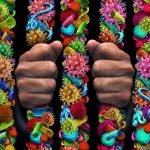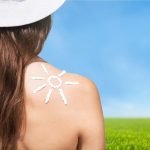Pregnancy, Childbirth & Hydrotherapy
Nature Cure Clinical Pearls
Sussanna Czeranko, ND, BBE
There is no period of life at which it is of so much consequence to observe moderation and simplicity of diet, and avoid the use of heating food and stimulants, as during pregnancy.
Hester Pendleton, 1851, p.168
The truly remarkable effects of water treatment in enabling our patients to recover so soon from the effects of childbirth, meets with great opposition on the part of some of the medical fraternity.
Joel Shew, 1851, vol. VII, p.117
I have never known the slightest ill effect from the use of water in childbirth in the practice of any water cure physician, not even when the patient seemed imprudent in sitting up and walking directly after the birth.
Dr Nichols, 1856, p.310
For some time now, I have wanted to explore hydrotherapies historically used during pregnancy and childbirth. The literature from the Benedict Lust publications certainly included women’s health issues, and there were many articles published by both men and women on this topic. However, let us delve more deeply into the era prior to Benedict Lust and the advent of Naturopathy to get some perspective on this remarkable modality and its value to women and babies.
Hydrotherapy in that time period is particularly reflected by a group of doctors who had studied with Vincent Priessnitz. They wrote prolifically on the subject of women’s health almost 2 centuries ago. As noted in the last issue of NDNR, women in America currently have the worst mortality rates among the developed nations despite the world’s most expensive medical system. So, let’s see if there are tools and lessons that we can learn from the earlier literature on hydrotherapy. After all, we know that pregnancy and childbirth are decidedly not diseases; on the contrary, they are natural life processes. How did the early Hydrotherapists help women safely through their pregnancies?
The literature reaches further back to the mid-19th century, benefitting from a different collection of works published as a 7-volume series, of various authors predicated on the work of Vincent Priessnitz. This body of work is called The Water-Cure Library, published in 1851 by Fowlers and Wells Publishers in New York City. In 167 years of scientific advances, one would assume that pregnancy and childbirth would be a very safe and no-risk affair. To recapitulate, let’s peek into the numbers and uncover what are actually false notions of safety in our time.
American women’s maternal mortality rate (MMR) is the highest among of all of the industrialized, developed countries. Having the highest MMR is not simply having the biggest number with the others in the pack following closely behind. No, the gap between United States and Canada, for example, is definitely wide despite their close proximity. The gap between the US MMR of 26.4 and Canada’s MMR of 7.3, for instance – notwithstanding its frequently misunderstood and unfortunately demonized socialized (translation: single payer system) health care – is incredibly wide, with Canada’s MMR being only 27% of its American counterpart. In fact, most Asian and European countries – such as Finland, Germany, France, Sweden, Belarus, Japan, Singapore, Australia, and Kuwait, to name but a few from across the world – have single-digit MMR statistics. The question is hardly rhetorical as to why contemporary women in the world’s most economically progressive and technologically advanced society should not benefit from mitigated risk factors in pregnancy and childbirth, achieving at least the low levels experienced by Finland, for example [MMR of 2.3]. (Kressebaum et al, 2016)
To unravel the reasons for these variations of data from different countries and cultures is beyond the scope of this article; however, we may well find valuable a look at the practices and interventions used almost 200 years ago for women moving through pregnancy and childbirth. Certainly, the number of deaths due to childbirth has dropped significantly over time; however, the contemporary data, tabulating deaths per thousand or per 100 000 continue to be worrying, and even alarming.
Dr Hester Pendleton
Hester Pendleton, a woman who wrote broadly on the topic of childbirth, contributed several chapters to The Water-Cure Library. Women of her era were largely in the dark in terms of information and guidance regarding pregnancy. Pendleton’s writings reveal the opinions and views of her medical contemporaries and shed light on how hydrotherapy and pregnancy were indeed very compatible. Pregnancy was fraught with pain and suffering, and too often resulted in death of mother or child, or even both. In Pendleton’s view, pregnancy was a natural process that did not need to be painful. She writes, “The functions of gestation and parturition are as natural as digestion; and were mankind brought into a natural and healthy state, we have reason to believe that these functions would be attended with little if any pain.” (Pendleton, 1851, p.154)
She addresses the question of diet during pregnancy and the prevailing points of view in the 1850s. Diet restrictions were adopted to reduce birthing complications by essentially reducing the weight of the fetus. Pendleton cites a diet created by a “Mr. Rowbotham” that influenced the bone development of the fetus. Many women perished and suffered greatly during childbirth, and his own wife was no exception. Her first 2 pregnancies were accompanied by severe pain. To reduce his wife’s suffering, he reduced any food items responsible for bone growth; his rationale was to decrease the hardness of the infant passing through the birth canal. He prescribed to his wife, during her third pregnancy, a diet consisting of fruits, vegetable, and even animal food, excluding all farinaceous substances, especially refined wheat, legumes, dairy products and caffeinated drinks, alcohol, and even water.
Another point of view is presented by Dr Eberle, who writes, “There is no period of life at which it is of so much consequence to observe moderation and simplicity of diet, and avoid the use of heating food and stimulants, as during pregnancy.” (Pendleton, 1851, p.168) He was opposed to unrestrained eating and to undesirable and unhealthy foods. He advocated for strict dieting during pregnancy to reduce the size of the baby.
Dr Eberle also counseled against the use of corsets. He writes, “The custom of wearing tightly-laced corsets during gestation cannot be too severely censured. … By this unnatural practice, the circulation of the blood throughout the abdomen is impeded―a circumstance which, together with the mechanical compression of the abdominal organs, is peculiarly calculated to give rise to functional disorder of the stomach and liver, as well as to hemorrhoids, uterine hemorrhage and abortion.” (Pendleton, 1851, p.172)
Dr Pendleton saw that insufficient diet created feeble and unhealthy children. She writes, “It is naturally the children of the poor who will [be affected] most from the inadequate nourishment of the parent during pregnancy; but those of the higher classes also suffer, though in a different way. The system is duly nourished only when the proper food is also properly digested; if the digestion be imperfect, no food, however nutritious, will afford a healthy sustenance.” (Pendleton, 1851, p.167)
Writings in The Water-Cure Library addressed the importance of exercise, fresh air, and soothing thoughts, as well as the avoidance of evil influences during pregnancy. But the key question that may pique our curiosity is how hydrotherapy during pregnancy was used. The literature that I am referencing in this article comes from the followers of Vincent Priessnitz. This fact has special significance because of the dire and ominous circumstances that women faced.
Baths, Diet and Exercise
Pendleton presents a remarkable case which was typical of pregnancies when the woman adopted hydrotherapies, dietary changes, and exercise. The woman was healthy and 17 years old. Her regime throughout the entire pregnancy included the following:
She took regularly a shower bath every morning, exercised every day, [rain or shine] in the open air, and when the amount of exercise was considerably less than common, a quick bath was taken before dinner, and regularly a sponge or rubbing bath was used before going to rest. Sitz baths were taken daily and the body bandage [trunk compress around the body] worn much of the time. (Pendleton, 1851, p.186)
It is important to note that when Pendleton refers to baths, she is referring to cold-water baths. No warm or hot water would have been used. The body bandage was a signature therapy used by Priessnitz, held by him in high esteem, since it was the very therapy that changed his destiny from being an invalid to a healthy adult.
Further therapies included enemas, using cold water to keep the bowels free. The 17-year-old patient ate a very plain diet consisting of vegetables, fruits, and farinaceous foods. In the last trimester, “the supper was always omitted so that only two light meals were taken daily and no food between times.” (Pendleton, 1851, p.187) She drank mineral water, which was “a powerful means to reduce the inordinate craving appetite with which so many are afflicted.” (Pendleton, 1851, p.187)
While taking her sitz bath one morning, labor began, and in 20 minutes a healthy baby was born. In about 10 minutes, the afterbirth came with no complications. After the delivery of baby, the mother rested a short time, and her body was sponged and dried quickly. Wet cloths were placed on the breast and the abdomen and the young mother was wrapped in blankets. She fell asleep soundly. Three days after the birth, she resumed her exercises in the open air. (Pendleton, 1851, p.187)
Dr Joel Shew
Joel Shew had spent several months studying with Priessnitz and had become one of his most assiduous followers, leaving behind a colossal body of literature. Shew lived a mere 39 years, and the depth of knowledge found in his writings is impressive. He wrote often on gynecology and on hydrotherapy. He brought a scientific rigor unsurpassed in his day, and his writings are a valuable stepping stone for those who want to develop and master the art of hydrotherapy. He recorded cases of childbirth that he attended, and he left a wealth of clinical pearls to guide future generations of doctors.
For example, Shew’s advice for preparation for childbirth began in pregnancy with cold water ablutions and sitz baths, and included wearing cold, wet wraps or bandages around the abdomen, dietary recommendations, and lots of exercise in the outdoors. These preparatory measures not only ensured a rapid and relatively painless birth, but also a quick after-birth delivery of the placenta.
As another example of the advice he produced for colleagues, Shew recounted a case that he saw in 1846 of a woman who 2 years prior had given birth to her first child. The birth was difficult and the child was premature. He states, “Although her health had been generally good, she was now troubled with severe constipation, and difficulty of breathing, indigestion.” (Shew, 1856, p.155) The prescription for the woman was to begin with tepid [80° to 92°F/27° to 33°C] (Kellogg, 1903, p.100) bathing daily, and to gradually lower the temperature of the water. When she was able to tolerate the cold water [55° to 65°F/13° to 18°C] (Kellogg, 1903, p.100), the daily bathing was increased to 2 ablutions per day. “Baths by affusions are very excellent to be used in pregnancy.” (Shew, 1851, vol. VII, p.29) Affusions were generally not taken using very cold water. Moderate or tepid temperatures described by Priessnitz were waters of 60° to 70°F/16° to 21°C. (Shew, 1851, vol. VII, p.35)
Hip Bath
In the morning, upon rising, the patient took a cold shower and also benefitted from a daily hip bath. (Shew, 1856, p.155) The hip bath was taken in a sitz tub or similar vessel – large enough to accommodate movement during the bath. Directions given by Shew: “The [tub] should be large enough to admit the motion of the arms in rubbing the abdomen, sides, and hips, first with one hand and then the other.” (Shew, 1851, vol. VII, p.38) He continues, “The more movement and friction, while in the bath, the better.” (Shew, 1851, vol. VII, p.38) One of the chief considerations in the hip bath is that, because it affects the digestive organs, it should only be administered after a meal has long been digested. Shew prescribed the hip bath often during pregnancy because of its tonic effects on the pelvic organs.
For dietary recommendations, Shew advised the woman to replace drinking coffee and tea with drinking cold water. She was to discontinue the use of butter and oily foods and eat coarse bread and fruit. Without any aid of enemas, her bowel habits normalized, and her complexion improved as well.
She also exercised daily in the open air. (Shew, 1856, p.155) The exercises, advocated by the Hydrotherapists during pregnancy, often entailed walking outside in the open air. Today we are inclined to think that walking a few blocks is adequate exercise. The women in the mid-19th century thought nothing of walking several miles every day.
Her labor was very short and without the terrible suffering experienced in her previous pregnancy. Slight labor symptoms began shortly after midnight and by 4:00 AM the true pains commenced. One hour later, she gave birth to a healthy boy. After the birth, wet compresses were applied locally and her husband was given instructions on how to administer a bath to his wife. On the first day she took 2 cold baths and slept. On days 2 to 4 she continued bathing, exercising in her room, and eating a simple diet. Both the mother and the child thrived remarkably well. (Shew, 1856, p.156)
Shew cites several such cases, and there is a common theme among them. In almost every case, regardless of economic status, the women had experienced tormenting pains during their previous pregnancies. Significantly, after following the recommendations that Shew provided, such as water applications, diet, and exercise, their recovery after delivery was astounding. What differed in the various cases were the symptoms experienced during their pregnancies. For example, in the case of another woman who had previously given birth twice and had suffered for a few years because of complications during the previous pregnancies and deliveries, the protocol was that she was “confined to her bed for eight to ten weeks after each accouchement. Before her third pregnancy, she concluded to throw away drugs and try the water cure.” (Shew, 1856, p.157)
Wet Girdle
This same patient, whom Shew discusses, began a daily routine of bathing twice a day, wearing the wet girdle, having a hip bath, and eating a simple diet twice a day. Her chronic debility was resolved by the hydrotherapies. The wet girdle or abdominal bandage was often used, sometimes in every pregnancy case. The linen used for the wet girdle was about 3 yards long and wide enough to cover above the hips and the lower abdomen. The wet girdle was worn wet and must be re-wetted should it should become dry. Shew relied upon the wet girdle during pregnancy to keep up “the general health and procure good sleep.” (Shew, 1851, vol. VII, p.49) For women who found the numerous layers too heavy and bulky, shorter pieces of cloth could be used instead.
Shew adds, “She walked often in the open air, and several miles a day up to the time when confinement was daily expected.” (Shew, 1856, p.157) Her labor lasted 2 hours before delivering a healthy baby. “After the birth, she slept two hours and then had a bath.” (Shew, 1856, p.157) After 3 days, she traveled home in a carriage and resumed her duties in the management of her household. In another case, a pregnant woman suffering from headaches was relieved by the daily baths. When the headaches become worse, “as many as three showers or plunge baths were taken in a day.” (Shew, 1856, p.158)
Rubbing Wet Sheet
One of Priessnitz’s water applications was the “rubbing wet sheet,” which Shew described as “being one of the mildest of all the water processes, as well as one of the most convenient, [and] … particularly applicable in pregnancy.” (Shew, 1851, p.28) Shew provides details for its administration:
A large linen sheet, of coarse material, is wrung out in cold water, and while dripping, one or more assistants immediately aid in rubbing over the whole surface. Rub over the sheet; not with it. This is continued briskly, three, five or more minutes, until the skin becomes reddened, and the surface in a glow. (Shew, 1851, vol. VII, p.25)
The purpose of the rubbing wet sheet was to restore an equilibrium in the blood circulation. It was ideal for patients who were bedridden. The rubbing wet sheet was administered to a part of the body. When the part was rubbed with the wet cloth, the part was dried and covered with a blanket before continuing with the rest of the body. For those who were mobile and able to walk, cold water was preferred. Cold water temperatures were adjusted to the strength of the patient. Shew writes that those persons exhausted from mental efforts “are greatly benefited by the rubbing wet sheet.” (Shew, 1851, vol. VII, p.27)
Enemas
Enemas became very important to administer at the beginning of labor. Shew considered the enema as “quick and harmless in its action and always aids the natural pains in accouchement.” (Shew, 1851, p.53)
Afterbirth
In 1845, Shew’s wife followed the prescribed guidelines during her pregnancy and delivered a healthy baby. Colleagues were concerned that her pelvis was not large enough to allow delivery of a baby, but Mrs Shew was determined to have a natural birth. Dr Shew writes of his wife’s labor: “The labor pains went, becoming exceedingly severe, and continued until 3:00 in the morning, at which time she gave birth to a large, healthy and well-formed female child.” (Shew, 1851, vol. VI, p.246) His wife’s family history revealed a strong tendency to hemorrhages, which she herself suffered after the birth of daughter. Shew resolved to place her in a cold sitz bath to stop the bleeding. He notes, “The water covered from near the knees over the whole abdomen, and no sooner had these parts come in contact with the water, than it seemed, as if by magic, the flooding ceased.” (Shew, 1851, vol. IV, p.247) Chilled by the cold bath, Mrs Shew was placed in bed, and her feet and chilled parts were rubbed until warm while falling asleep.
When the after-pains began, Mrs Shew was again placed in a cold sitz tub and friction to the abdomen helped to alleviate them. Twenty-six hours after the birth of their child, Mrs Shew was up and about. Three days later, the Shews had moved into a new home with 3 flights of stairs, with Mrs Shew completely overseeing the move. She continued with the daily cold baths and was eating a plain diet twice a day.
Dr Nichols, another Hydrotherapist and a woman who attended childbirths, used vaginal douches after the childbirth, using cold water. She writes,
This causes the uterus to contract immediately, and saves the patient from after-pains, which are caused by the efforts of the uterus to contract, and assume its normal state. … I then wash the patient with a sponge in cold water, and put a long, cold wet bandage closely around the abdomen. She then is dressed, goes into a clean bed and generally sleeps five or six hours. When she wakes, she goes into a cold sitz bath for 15 minutes and is sponged over the whole [body]; a fresh wet bandage is then applied, and she is allowed to sit up for a short time as she wishes. (Nichols, 1856, p.310)
Nichols also reports that this treatment of a sitz bath, cold wet bandage around the abdomen, and a vaginal douche continued for a month. Women who followed this regimen were able to resume their previous life habits within a week of their labor.
When Dr Shew conversed with a medical colleague of his wife and his patients’ births, that colleague indicated that “he could not conceive it possible for a woman to get up and go about safely, in 24 or even 48 hours after childbirth.” (Shew, 1851, vol. VI, p.250)
Mastitis
A common complaint after delivery is mastitis. Dr Joel Shew advised his patients prior to delivery to apply wet bandages to the breast using cloths at temperatures that felt comfortable, and to use them as frequently and as necessary to keep any inflammation from advancing. Shew “always and in every case directed these bandages to be applied immediately after labor, whether there is any undue inflammation or not.” (Pendleton, 1851, p.191) These wet bandages were covered with dry flannel to prevent evaporation. Another added benefit of these breast bandages was that they helped induce a healthy secretion of milk.
For cracked and painful nipples, “Dr. Shew recommends that wet bandages be worn frequently and especially at night.” (Pendleton, 1851, p.192)
Conclusion
Hydrotherapy used to prepare and support women through the difficulties of childbirth had positive benefits for the women who often suffered under their allopathic providers. Drs Pendleton and Shew’s impact upon the lives of women was a godsend at a time when childbirth was fraught with pain and, too often, death. Simple measures, such as cold water ablutions, cold hip baths, simple dietary recommendations, and walking for miles in the open air, allowed even dainty and compromised women to give birth to healthy babies safely.
In next month’s issue, I will continue on the topic of pregnancy, examining further how pregnancy and its many-faceted symptoms were managed using hydrotherapy, from the archives of our beloved Priessnitz.
References:
GBD 2015 Maternal Mortality Collaborators. (2016). Global, regional, and national levels of maternal mortality, 1990-2015: a systematic analysis for the Global Burden of Disease Study 2015. Lancet, 388(10053), 1775-1812.
Kellogg, J. H. (1903). Rational Hydrotherapy. Philadelphia, PA: F. A. Davis Company Publishers: 1193.
Pendleton, H. (1851). Parents’ Guide for the Transmission of Desired Qualities to Offspring and Childbirth Made Easy. In: The Water-Cure Library, Volume 2. New York, NY: Fowlers and Wells Publishers.
Shew, J. (1851). Water-cure Library, Volume IV. New York, NY: Fowlers and Wells Publishers: 282.
Shew, J. (1851). Water-cure in Pregnancy and Childbirth. Water-Cure Library, Volume VII. New York, NY: Fowlers and Wells Publishers, New York, pp. 122.
Shew, J. (1856). Pregnancy and Childbirth. In: The Water-Cure in America: over 300 Cases of Various Diseases Treated with Water. New York, NY: Fowler and Wells Publishers: 380.
Image Copyright: <a href=’https://www.123rf.com/profile_goodluz’>goodluz / 123RF Stock Photo</a>
 Sussanna Czeranko, ND, BBE, graduate of CCNM, is a licensed ND in Oregon. Sussanna has developed an extensive armamentarium of traditional nature-cure tools for her patients. A frequent presenter, she is especially interested in balneotherapy, botanical medicine, breathing and nutrition. As Curator of the Rare Books Collection at NUNM, she has completed Hydrotherapy in Naturopathic Medicine, the tenth book of the 12-book series in the Hevert Collection. The development of her new medical spa in Manitou Beach, Saskatchewan – the site of a magical, saline lake – is complete. Her next large project is to host doctors interested in celebrating and sharing the wealth of our traditions. Join her and others for the Inaugural “Finding Our Roots Again Retreat,” August 12-19, 2018. www.Manitouwaters.com
Sussanna Czeranko, ND, BBE, graduate of CCNM, is a licensed ND in Oregon. Sussanna has developed an extensive armamentarium of traditional nature-cure tools for her patients. A frequent presenter, she is especially interested in balneotherapy, botanical medicine, breathing and nutrition. As Curator of the Rare Books Collection at NUNM, she has completed Hydrotherapy in Naturopathic Medicine, the tenth book of the 12-book series in the Hevert Collection. The development of her new medical spa in Manitou Beach, Saskatchewan – the site of a magical, saline lake – is complete. Her next large project is to host doctors interested in celebrating and sharing the wealth of our traditions. Join her and others for the Inaugural “Finding Our Roots Again Retreat,” August 12-19, 2018. www.Manitouwaters.com










